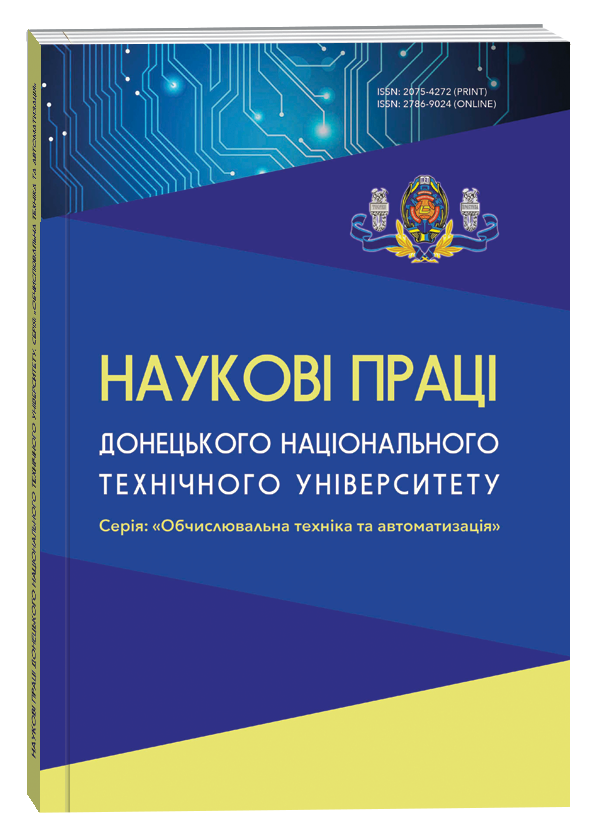INTELLIGENT SYSTEM FOR ASSISTING PEOPLE WITH VISUAL IMPAIRMENTS
DOI:
https://doi.org/10.31474/2786-9024/v2i3(35).316396Keywords:
intelligent support system, assistance for visually impaired individuals, web application, computer vision, object recognition, YOLOv3, voice assistance, navigation, adaptive technologyAbstract
The article is dedicated to the analysis of modern technologies used to create intelligent systems for supporting people with visual impairments. The relevance of this topic is determined by the need to develop effective and accessible solutions that facilitate the daily lives of people with disabilities, particularly those with vision impairments. The aim of the article is to provide a comprehensive analysis of existing technologies, examine the advantages and disadvantages of available solutions, and identify potential ways to improve such systems. The article discusses leading solutions in this field, such as Aira, Be My Eyes, BlindSquare, and Seeing AI, which enable navigation and support for people with visual impairments through mobile devices, cameras, and other sensory systems.
The authors also explore the needs of the users of these systems, identifying the main challenges faced by people with limited vision, such as obstacle detection, providing timely information about the surrounding environment, and ensuring ease of use. Based on this analysis, the requirements for future support systems have been formulated, and the architecture of the intelligent system, which includes components for object recognition, obstacle detection, navigation, and voice assistance, has been developed.
Particular attention is given to the integration of object and obstacle recognition components, which are implemented using computer vision technologies such as OpenCV and neural networks. Additionally, the possibility of integrating voice assistants to provide convenient and accessible feedback is considered. The article also outlines the methods used for developing and testing such systems, including structural and comparative analysis of existing solutions, as well as experimental methods to assess the effectiveness of the software.
The research and development of intelligent systems for supporting people with visual impairments is an important step towards creating an accessible and barrier-free environment for people with disabilities, opening up new opportunities to improve their quality of life.
References
Magnitude, temporal trends, and projections of the global prevalence of blindness and distance and near vision impairment: a systematic review and meta-analysis. [Online]. URL: http://surl.li/epnzmb. Accessed: Nov. 28, 2024.
We’re Aira, a Visual Interpreting Service. [Online]. URL: https://www.aira.io/. Accessed: Nov. 28, 2024.
Be My Eyes, "Providing vision to blind and visually impaired people," [Online]. URL: http://surl.li/omxdxl. Accessed: Nov. 28, 2024.
A popular app is experimenting with AI. [Online]. URL: http://surl.li/qisnml. Accessed: Nov. 28, 2024.
What is BlindSquare? [Online]. URL: http://surl.li/jhkesl. Accessed: Nov. 28, 2024.
Seeing AI – Talking Camera for the Blind. [Online]. URL: https://www.seeingai.com/. Accessed: Nov. 28, 2024.
B. P. Borkivskyi and V. M. Tesliuk, "Vykorystannia neiromerezhovykh zasobiv dlia rozpiznavannia ob'iektiv u mobil'nykh systemakh z obkhodom pereshkod," Scientific Bulletin of UNFU, vol. 33, no. 4, pp. 84-89, 2023. [Online]. URL: https://doi.org/10.36930/40330412. Accessed: Nov. 28, 2024.
M. Milon Islam, M. S. Sadi, and T. Bräunl, "Automated walking guide to enhance the mobility of visually impaired people," IEEE Trans. Med. Robotics Bionics, vol. 2, no. 3, pp. 485-496, Aug. 2020, doi: 10.1109/TMRB.2020.3011501.
M. Sadi, T. Bräunl, and M. Islam, "Smart Navigation for Visually Impaired People Using Artificial Intelligence," ITM Web of Conferences, vol. 46, p. 03053, 2022, doi: 10.1051/itmconf/20224603053. URL: http://surl.li/tpjxmi. Accessed: Nov. 28, 2024.
M. R. N. Abdullah, M. M. Rahman, M. A. Fattah, and S. A. S. N. Islam, "An AIoT-Based Assistance System for Visually Impaired People," Electronics, vol. 12, no. 18, p. 3760, Sep. 2023, doi: 10.3390/electronics12183760.
S. Myronenko, S. A. Murakhovskyi, and O. A. Skidchenko, "Information technologies in the design of inertial sensors for orientation and navigation systems," Visnyk KPI, vol. 59, no. 1, pp. 63–70, 2020, doi: 10.20535/1970.59(1).2020.210019.
What is GPS: Types of Positioning Systems, How it Works, and Its Future. [Online]. URL: http://surl.li/jltkpe. Accessed: Nov. 28, 2024.
GPS – Wikipedia. [Online]. URL: http://surl.li/poogzq. Accessed: Nov. 28, 2024.
Downloads
Published
How to Cite
Issue
Section
License
Copyright (c) 2024 Nazarii Omelchuk, Iaroslav Dorohyi

This work is licensed under a Creative Commons Attribution-NonCommercial-NoDerivatives 4.0 International License.





